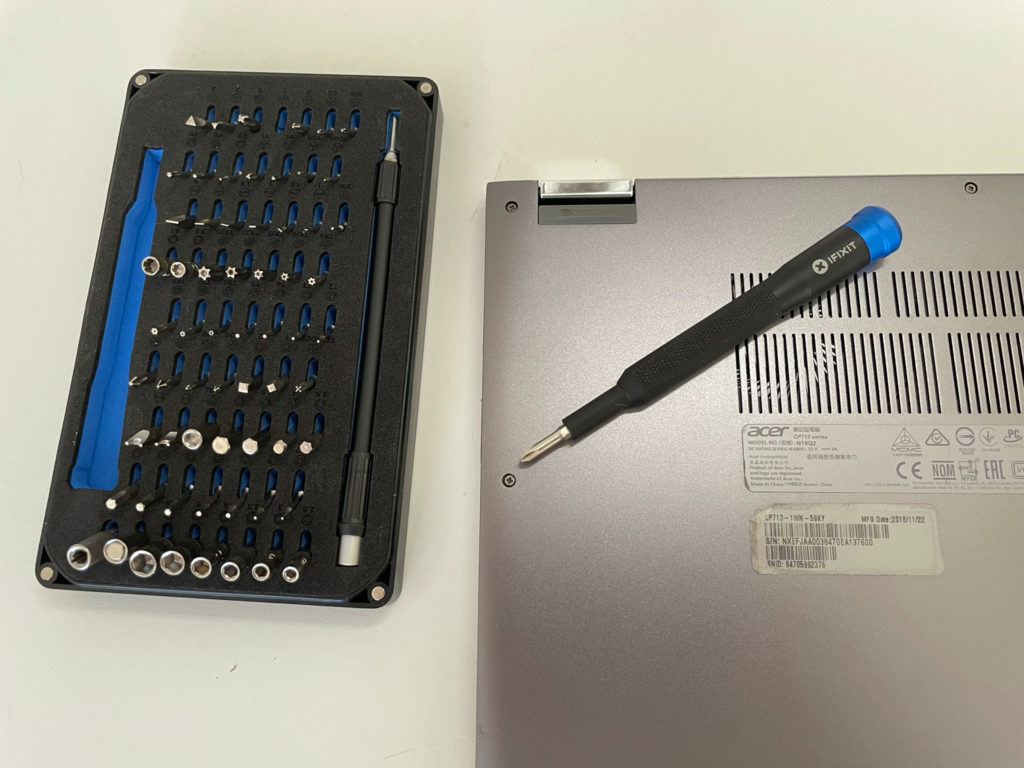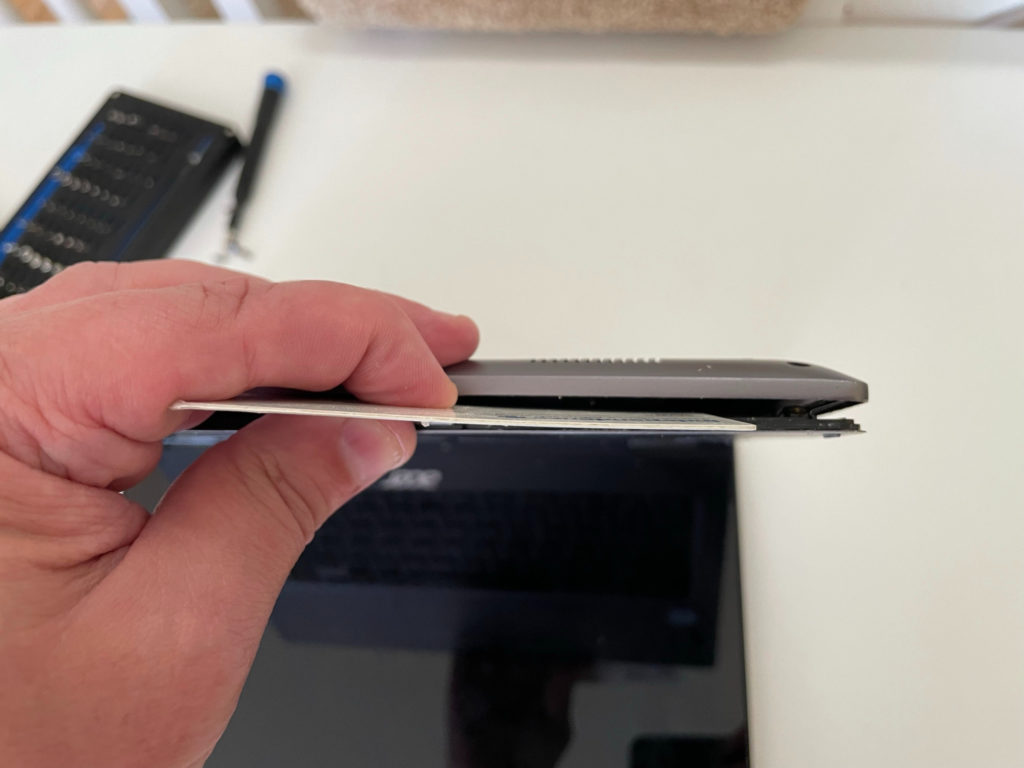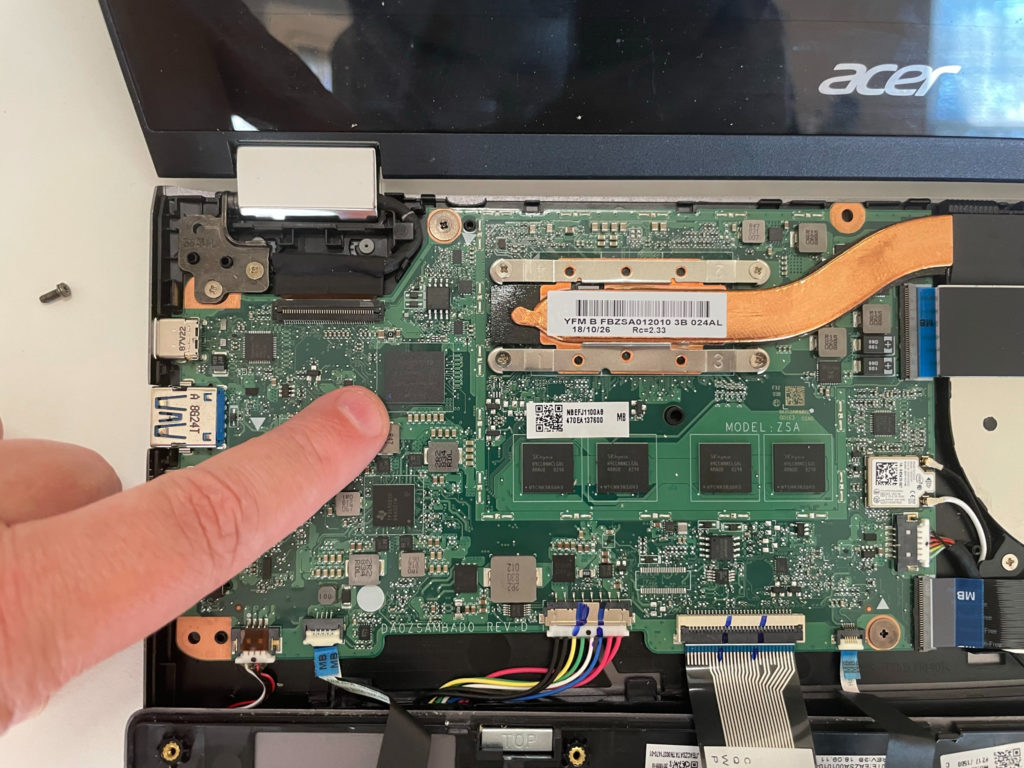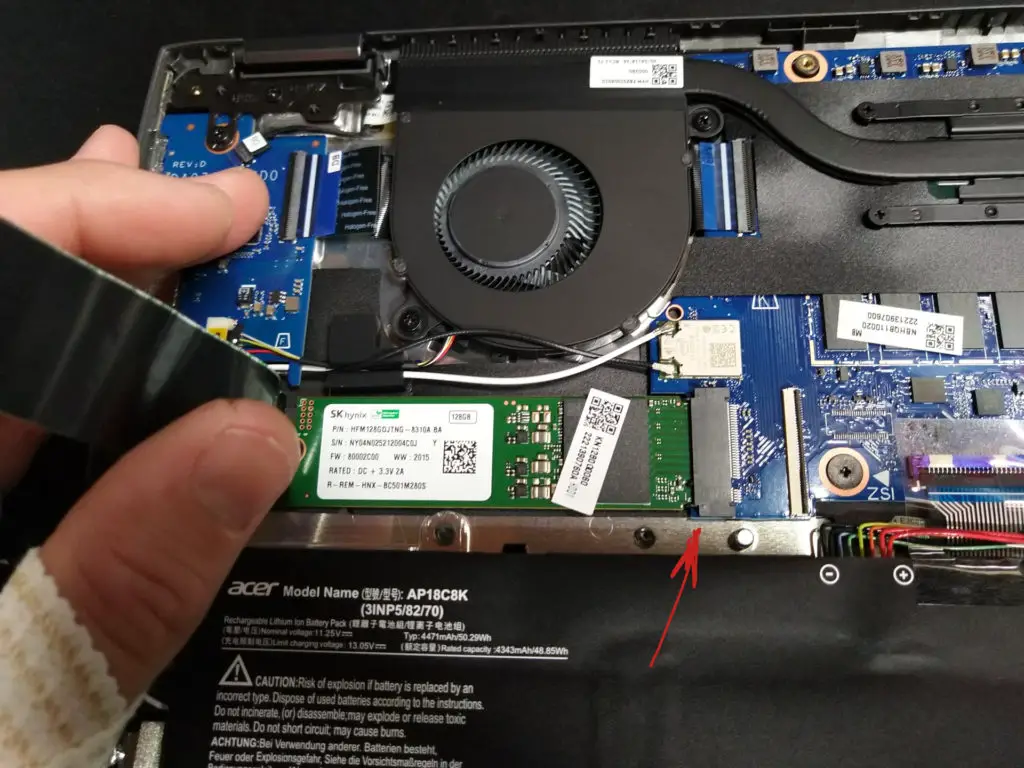Earlier this week, I shared thoughts on how my Chromebook might be able to get me through a Masters in Computer Science program. With a Core i5 and 16 GB of memory, my Acer Chromebook Spin 13 has plenty of horsepower, but not enough storage for working with large sets of data. That had me thinking of a question I repeatedly get here: Can you upgrade SSD on a Chromebook?
A reader reached out to me suggesting to upgrade the meager 128 GB of SSD with an M.2 drive. And in theory, that sounds great.
But, the only Chromebooks that would support such an SSD storage upgrade would already have to use the M.2 hardware specification. And I see no mention of M.2 on the specs of my Chromebook. You’ll have to check your own model, of course.
Just to be sure, however, I opened up my Acer Chromebook Spin 13.

It was actually quite easy as I have a good driver set (the $35 iFixit Mako) and I have experience building computers. I’m not suggesting that you should follow this example; you don’t want to break your hardware and if you do, I’m not responsible!
Note that you should remove the battery cable from any Chromebook you have internal access to. And don’t leave a power cord plugged in either.
After removing all of the screws on the back chassis, I used a thin plastic rewards card to gently pry the chassis from the keyboard.

With the chassis and keyboard detached, I can now see the motherboard and components inside the Acer Chromebook Spin 13.
And right away, I can see that there isn’t an M.2 interface to plug in a larger, faster SSD drive. In fact, I can see the soldered storage on the board, as shown below, and the four soldered RAM chips in the middle as well.

So the specification sheet didn’t lie. There is no M.2 interface in the Acer Chromebook Spin 13.
About the only thing I could actually replace is the battery, which is a simple pull of a cable to remove as the battery isn’t glued down. My battery is fine though, so I buttoned up the Chromebook in just a few minutes.
Now every Chromebook model is different. Some newer devices, such as the Acer Chromebook Spin 713 (the successor to my device) does use M.2 for storage. Indeed, a Redditor swapped in a 1 TB M.2 SSD in his Spin 713 last year.
Here’s a picture of his opened Chromebook showing the M.2 slot that my laptop doesn’t have. I annotated the image so you can see the new SSD board and M.2 interface where it’s installed.

Once he replaced the storage, he had to get Chrome OS on the SSD, which is done by using downloadable Chrome OS recovery images. These are the images provided by Google in case your software has ever gone bad. After Chrome OS is on the new drive, he just boots up and has access to the larger storage capacity.
Mostly, you’ll find upgradeable storage options on higher priced, relatively new Chromebooks. Don’t expect to find one in your Celeron or Pentium-based Chromebook, for example. And if you have a high-end Chromebook from more than 2 years ago, like I do, you’ll likely be out of luck as well.
In that case, you can always do what I originally plan to do: Attach a large capacity SSD over USB-C or get a large microSD card, even if it’s not as speedy as a “true” SSD drive.


14 Comments
Cool, is this leading to .. . how to put Win11 on your Chromebook?
Maybe although I have little interest in that. I have a custom gaming PC that I built last summer so I always have Windows available if I need it. Which other than gaming, is rarely. 😉
Well, have fun at your Master’s. I’m way beyond that, semi-retired now (old enough to have toggled the boot into a PDP front panel) but I do use a chromebook for linux development; java, rust and C as it happens, and it works fine. It takes time out for a few minutes sometimes, when COC redoes itsself, but it is pretty good. I don’t need huge storage, however; what I’m doing involves lots of others doing little things – raspberry pi’s and wee small microcontrollers, mostly – but the chromebook is fun, and it fits happily in the kitchen.
Bonne Chance
Chris
Ah, that’s a little before my time. I grew up on Trash-80’s, my C-64 (still works!) and the like! 🙂
I successfully upgraded the m2 SSD on my Lenovo IdeaPad Flex 5 Chromebook from 128GB to 256GB.
It was fitted with a M2 2242 NVMe SSD and the upgraded SSD had to be the same form factor.
The details on how to do this are available in Lenovo’s hardware maintenance manual for this Chromebook. I had to force the Chromebook into recovery mode before it would install the software from the Chrome OS usb recovery drive.
Nice! That’s about the most inexpensive Chromebook I can think of with M.2 support. It’s a great little device, especially for the price.
What a stupid article. You wrote a bunch of junk only to say you accomplished nothing.
He accomplished the acquisition of knowledge and drew in information about the subject from elsewhere.
Nope, he has provided very useful information.
I was thinking of buying a similar older Acer Chromebook, and was curious whether I could replace the SSD… and this turned up in Google to answer my question, and it was helpful to see the inside as well.
Thanks, Kevin!
Wow – given storage has typically been a failure point on computers, this makes them significantly more disposable ie unrepairable than they’d otherwise be, for want of an easy expansion option. I’d say it’s unethical, which it would be but for the small footprint of the waste. But it feels kind of offensive. I imagine it violates France’s law on inbuilt obsolescence. I get that the economies of selling one machine for $10 less can be argued for on the basis of selling $20 of extra storage for $80 more at initial sale, but I think that’s an artificial and unconvincing evasion of the charge.
Kevin – Thanks for the insightful piece. Re: 16 Gb memory…did you purchase your Spin 713 with it or did you upgrade yourself? If you did it yourself, do you have a post on that and what memory module did you use?
Thanks, and keep up the great work!
Thanks for the kind words, Chris. I actually bought a refurbished Acer Chromebook Spin 13 (not the 713 because it wasn’t out at the time) pre-configured with 16 GB of memory. Since the RAM modules are soldered on, typical of most Chromebooks, there was no way to upgrade the RAM myself. More info here on the device when I bought it: https://45-56-100-85.ip.linodeusercontent.com/news/acer-chromebook-spin-13-with-16-gb-ram-should-you-buy-one/
I have a couple’s of CB ranging from 32 to 128GB storage. I have never run out of storage capacity. The closest I got was on the Duet which form factor invites to install lots of Android games. In all other cases, either internal or an microSD/usb-c drive helps me with my requirements. Hopefully, with Android 11 coming to CB, I wish it would support installation of apps on external disks. If not, I’ll need to control myself not to install all games that pop up on Ads.
Not for nothing, but I have a 2015 HP Chromebook G1 14″ and I opened mine up and saw what you saw, however when I removed the motherboard and flipped it over the M.2 was on the other side. Are you sure you didn’t disassemble the unit far enough?